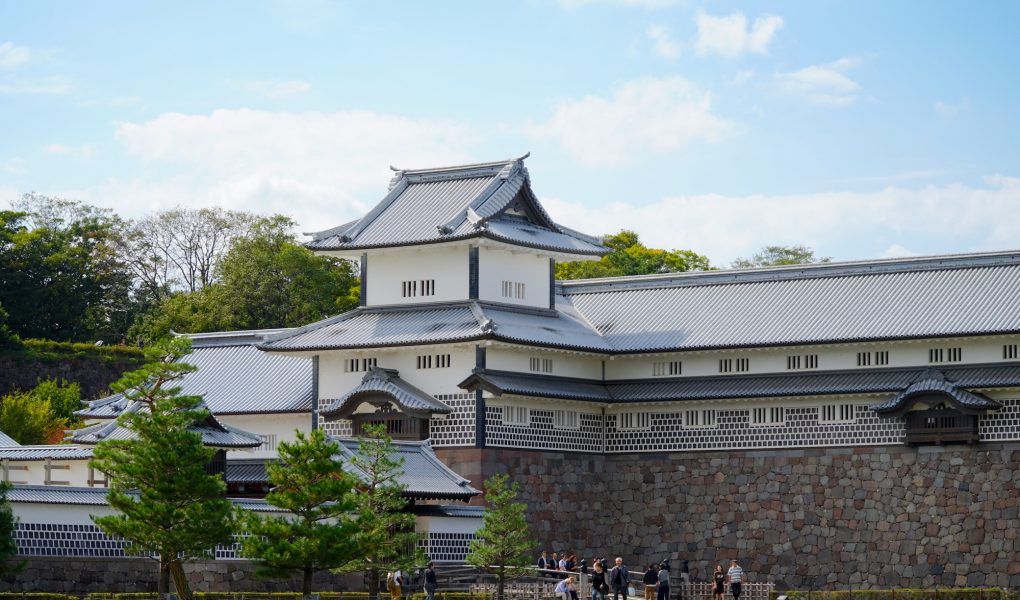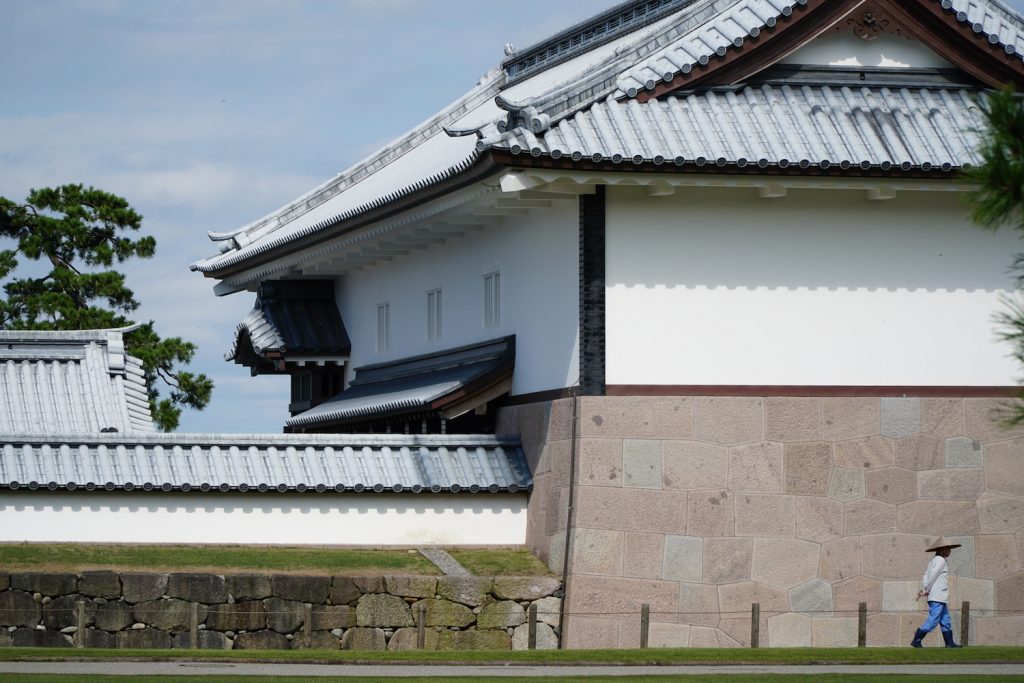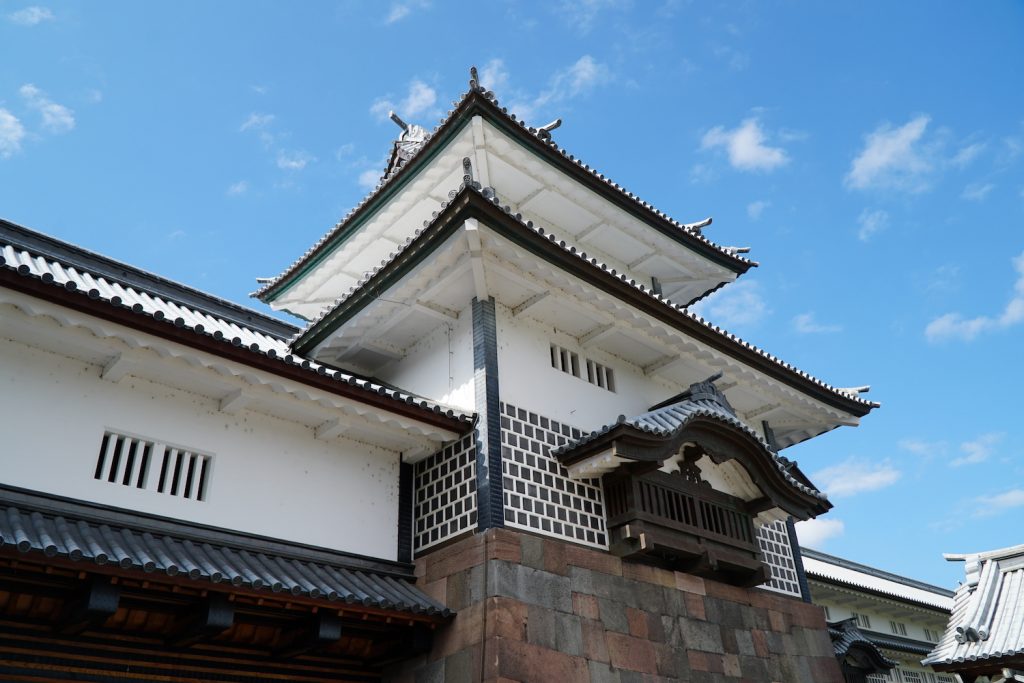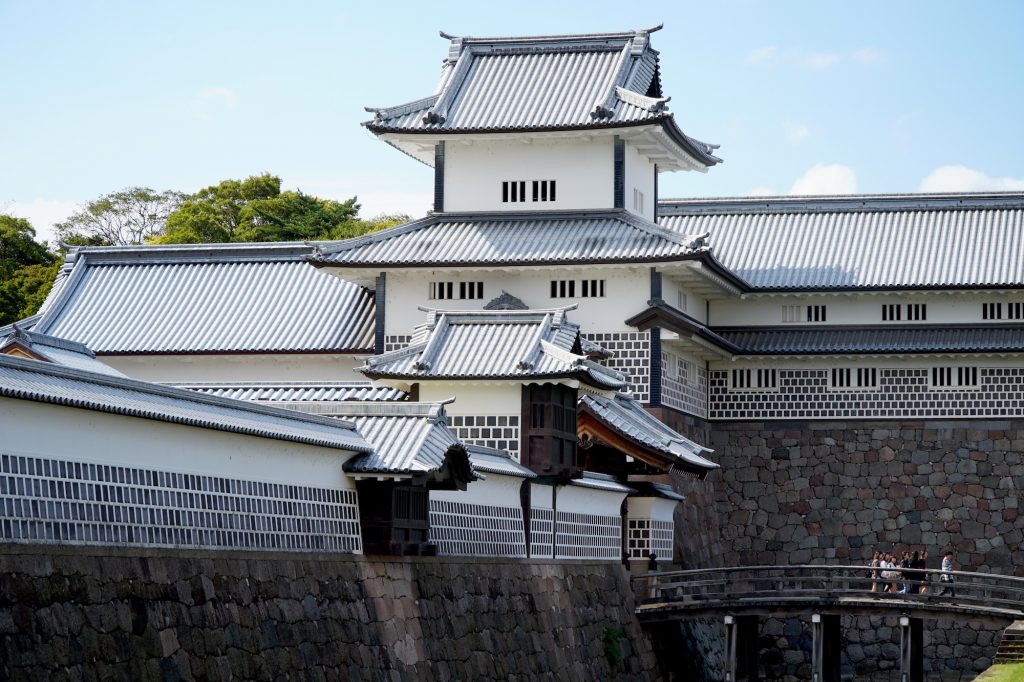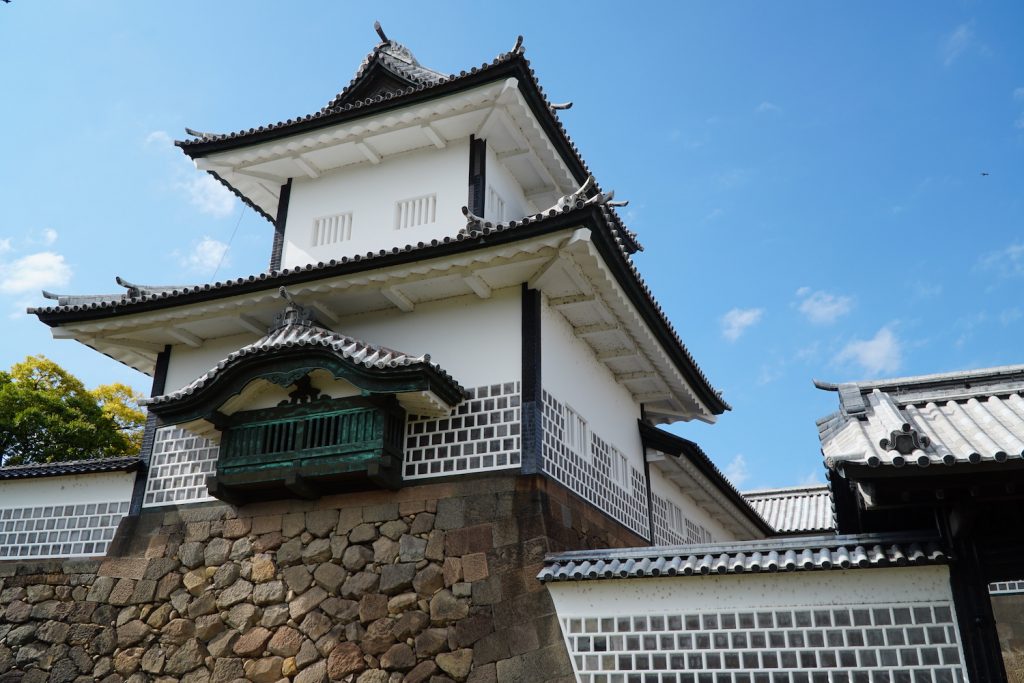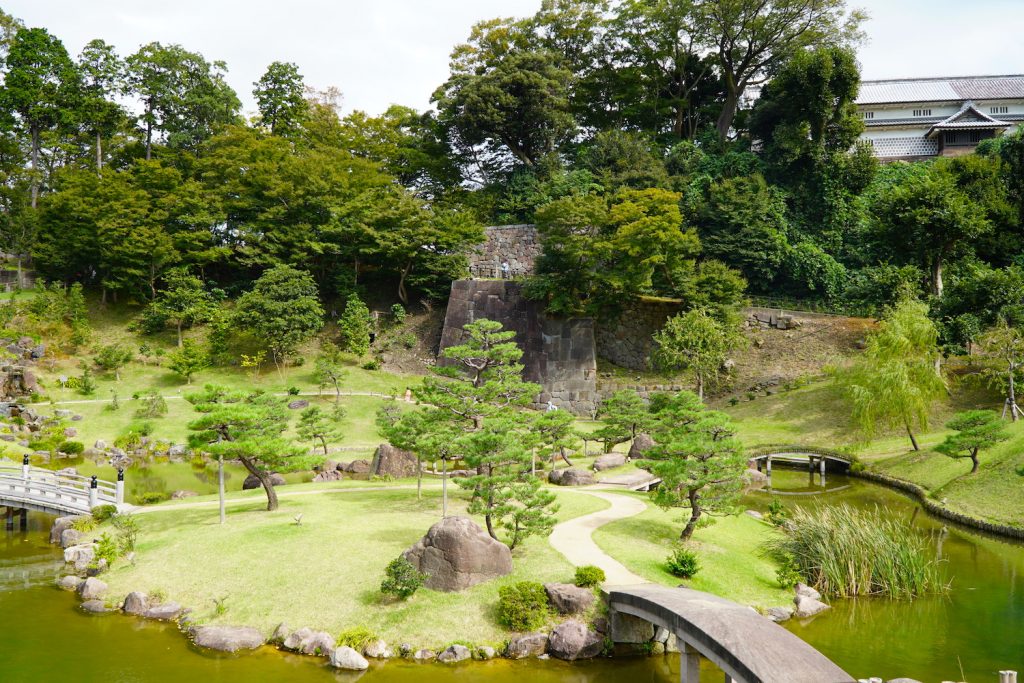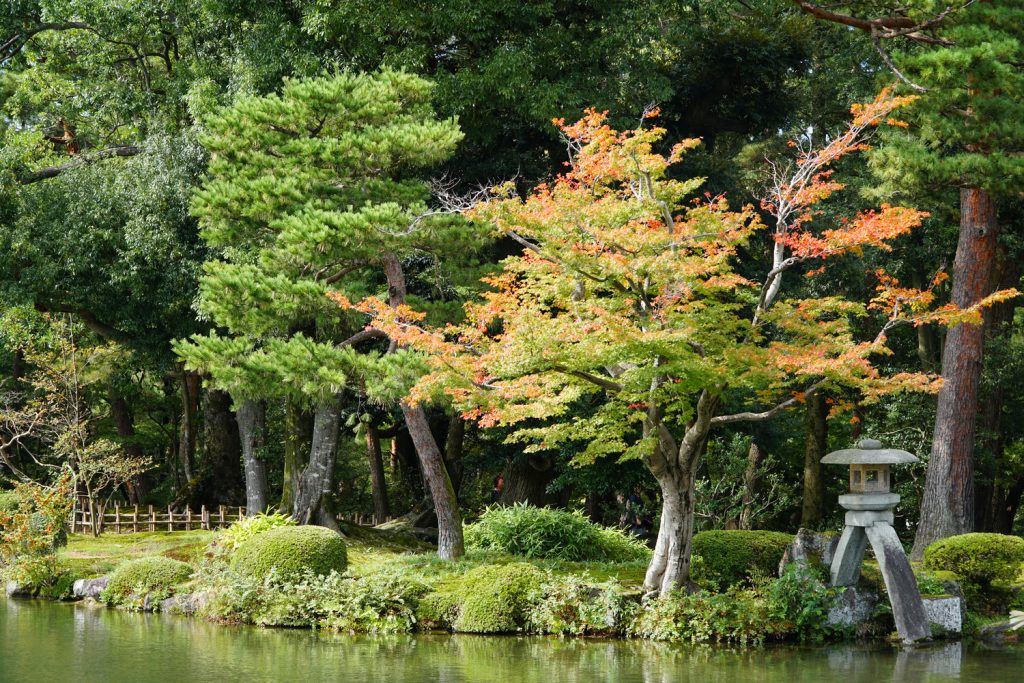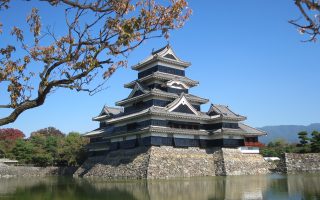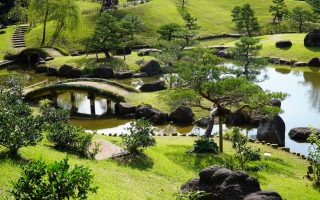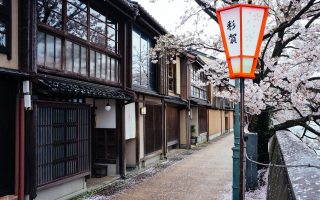Kanazawa Castle Park in Kanazawa, Ishikawa Prefecture, is a larger park where the important Kanazawa Castle was located from 1580 to 1871. Today the park contains the few buildings that have survived various fires over the centuries, and a couple of reconstructed buildings which give a sense of the castles style, size and significance.
Accommodation Kanazawa Tours Hokuriku Arch Train Pass
Kanazawa castle was the headquarters of the Maeda Clan who ruled the Kaga domain (current day Kanazawa) from 1583 up until the Meiji restoration in 1868 when the feudal system was abolished. Today, the castle is partially restored, and work is ongoing to rebuild parts of the complex.
The oldest remaining structure is the Ishikawa-mon gate, which dates back to 1788. From the same period, the Sanjukken and Tsurumaru storehouses have also survived the numerous fires. The reconstruction efforts in recent years have added the two towers (or turrets), Hishi and Tsuzuki Yagura and the Gojukken storehouse in between the two. It is possible to enter these new buildings against a fee. Inside are exhibitions on ancient building techniques used for the construction of the castle. In 2010 a replica of the Kahoku-mon main gate was added along with a reconstruction of the Imori Moat, and in 2015 the castles former inner garden, Gyokusen’inmaru Garden, was reopened. With all these additions, Kanazawa Castle has regained some of its former beauty. The visitor is now able to better understand the size, beauty and complexity of this old stronghold.
All photos above © touristinajapan.com
Kanazawa Castle Gardens
The castle has two beautiful gardens which used to be a part of the complex. South-east of the castle park is the famously beautiful Kenroku-en garden, which is ranked as one of the 3 most beautiful in all of Japan. Kenroku-en used to function as the outer garden for the castle. On the western side of the castle grounds one finds the newly rebuilt Gyokusen’inmaru Garden, which is beautifully backed by the castles defensive walls. Gyokusen’inmaru was once the inner and private garden of the castle.
Kanazawa castle, Gyokusen’inmaru Garden and Kenroku-en Garden together make for a great half-day exploration as they are all in walking distance of each other.
All photos above © touristinajapan.com
History of Kanazawa Castle
Kanazawa is an old castle town, which developed around a fortified temple controlled by the Kaga Ikki, a rebelious group of peasants and lesser nobles. The area controlled was called the “The Peasants’ Kingdom“. The area was however conquered, and over a three year period changed hands a few times until, in 1583, it was in the hands of Maeda Toshiie. Maeda Toshiie decided to use Kanazawa as the center for managing what turned out to be the Kaga Domain.
Kanazawa castle was the power center of the Maeda Clan and the Kaga domain for almost three centuries (1583-1868). The castle was located in a strategic location, on top of a ridge between the two rivers Asano River and Sai River. On the southern and eastern sides, the area was protected by mountains, and on the western side by the ocean, making the location perfect for a fortress.
In 1592 a complete reconstruction of the castle was initiated, and the famous castle expert Takayama Ukon was supposedly asked to aid in the design of the complex.
Only 10 years later, in 1602, the castles 6-story main keep was destroyed by fire. The keep was never rebuilt in it’s original form. Instead, a 3-story tower was built in the castles most inner and best fortified area. The tower served as the residence of the Maeda Clan.
Yet another fire destroyed large parts of the castle (and much of Kanazawa) in 1631. Following this fire, large changes were made to the complex. Lord Maeda Toshinori had the 11km long Tatsumi Canal constructed in 1632. The canal, which was lead through the castle grounds, was supposed to help fire prevention in the city and castle area, but also supplied water for the castle’s moats and for the castles outer garden, Kenroku-en.
Constantly plagued by fire, the castle burned nearly to the ground in 1759. A reconstruction was initiated and the new castle was finalized in 1808. The oldest structure still existing in the castle today, the Ishikawa-mon gate, dates back to 1788 and was part of that reconstruction.
In 1868 the Meiji restoration abolished the feudal society, and Kanazawa castle was no longer needed. The premises were given to the Imperial Japanese Army in 1871, and were used as headquarters for one of their divisions. Just ten years later, in 1881, nearly the entire castle burned yet again, with the Ishikawa-mon gate, Sanjukken Nagaya and Tsurumaru storehouses being the only buildings to survive.
From 1949 to 1978 Kanazawa University occupied the castle area, and in 1996 Ishikawa Prefecture purchased the castle site form the government, to initiate the construction of the current-day Kanazawa Castle Park. A few years later, the construction of the two towers, Hishi and Tsuzuki Yagura, and the Gojukken Nagaya storehouse in between commenced.
In 2010 the reconstruction of Kahoku-mon, the castles former main gate, was completed along with the Imori moat which is located betwen the castle and Kenroku-en garden.
Planning your visit
| Hours | 7:00 – 18:00 (March 1st – October 15th) 8:00 – 17:00 (October 16 – February 28) |
| Entrance fee | Free (except entrance to the turrets) |
| Website | Official Castle website |
| Accommodation | Kinjohro, UAN kanazawa, The Share Hotel Kumu and more hotels |
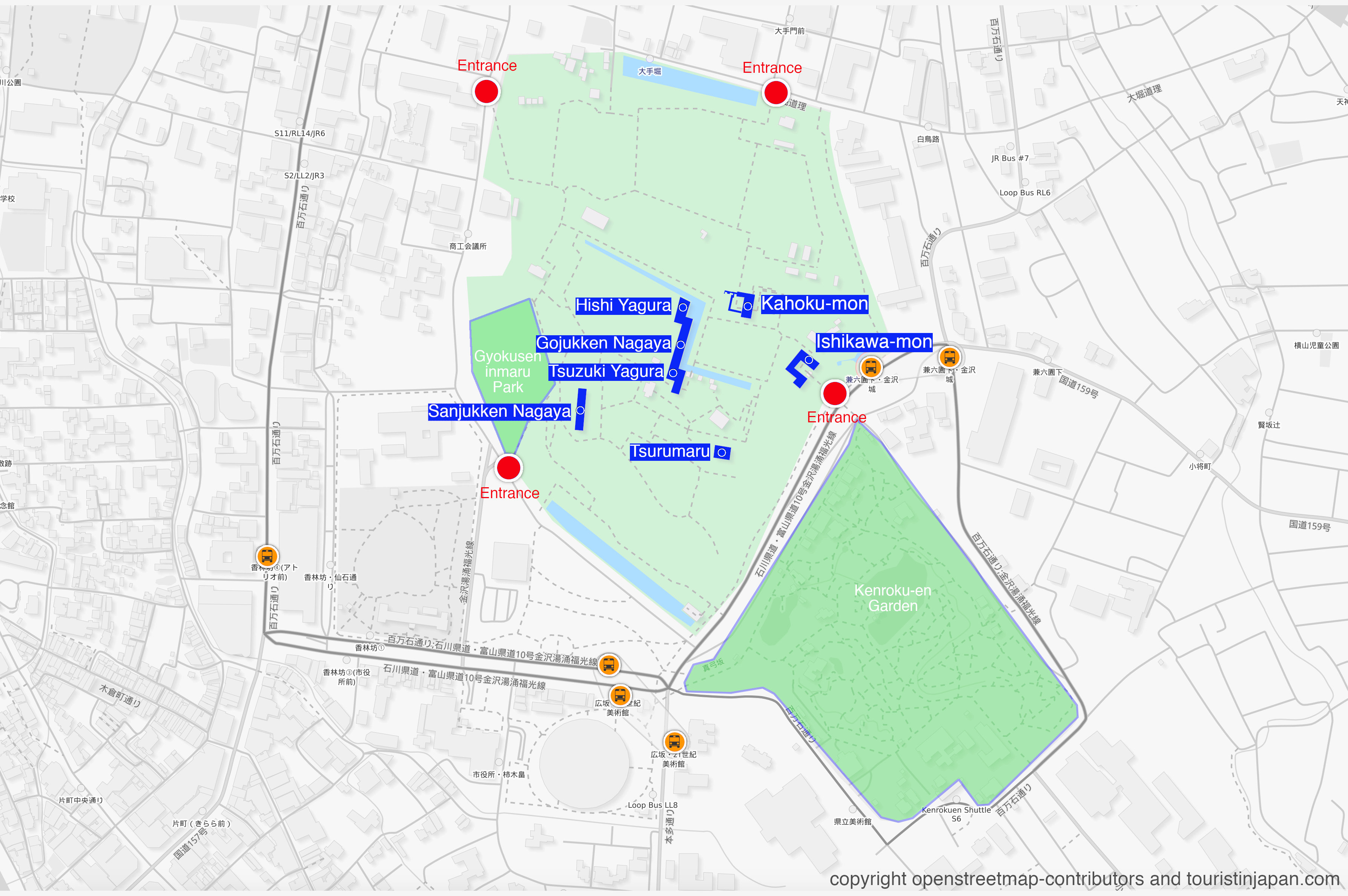
Getting there
Kanazawa Castle can be entered from all sides. However, the most impressive entrance is through the Ishikawa-mon gate on the south-eastern side of the complex.
Loop bus: the loop bus which runs around Kanazawa stops at Kanazawa Castle Park and Kenroku-en. Both the right loop and left loop can be taken. The stops are respectively RL8 and LL9. One-way fare: ¥200. A day pass costs ¥500.
Official Bus website: hokutetsu.co.jp
Shuttle bus: a dedicated shuttle bus departs from Kanazawa Station to Kanazawa Castle and Kenroku-en. Get off at stop S8. One-way fare: ¥200 on weekdays, ¥100 on weekends and holidays.
Official Bus website: hokutetsu.co.jp
JR Bus: if you have JR Pass, then you can take advantage of the JR Bus which runs through Kanazawa. It is free for holders of the Japan Rail Pass. The Korinbo Line, which departs from Kanazawa Station, stops at Kanazawa Castle and Kenroku-en. Get off at stop #6 when departing from Kanazawa Station.
Nishinihon JR Bus website: nishinihonjrbus.co.jp
Show larger map

